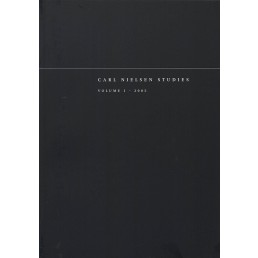"Dreams and Deeds" and other Dualities: Nielsen and the Two-Movement Sympony
DOI:
https://doi.org/10.7146/cns.v5i0.27762Abstract
It is well known that Nielsen’s two-movement Fifth Symphony is strongly dualistic in character. The composer himself commented that ‘A title such as “Dreams and Deeds” [Drøm og Daad] could maybe sum up the inner picture I had in front of my eyes when composing’. But it is by no means clear at what level that duality and others he mentioned are actually embodied in the work, or where it stands in relation to other two-movement symphonies composed before and after. Building on an essay by David Fanning in Carl Nielsen Studies 4, the present article fi rst considers these questions in the light of the model for symphonism proposed by the Russian scholar Mark Aranovsky. The Fifth Symphony and those two-movement symphonies found to contain the most fundamental and polarised dualities are then variously related to religious and philosophical traditions that stress dualism – from Zoroastrianism, through Yin and Yang, to Sufism, touching in passing on the philosophy of the mind and on Jung. The aim is to gain a richer and clearer picture of the uniqueness of Nielsen’s Fifth in relation both to symphonic tradition and to the history of ideas.Downloads
Published
2012-10-01
How to Cite
Fanning, D., & Assay, M. (2012). "Dreams and Deeds" and other Dualities: Nielsen and the Two-Movement Sympony. Carl Nielsen Studies, 5. https://doi.org/10.7146/cns.v5i0.27762
Issue
Section
Articles
License
- Authors retain copyright and grant the journal right of first publication with the work simultaneously licensed under a Creative Commons Attribution License that allows others to share the work with an acknowledgement of the work's authorship and initial publication in this journal.
- Authors are able to enter into separate, additional contractual arrangements for the non-exclusive distribution of the journal's published version of the work (e.g., post it to an institutional repository or publish it in a book), with an acknowledgement of its initial publication in this journal.

